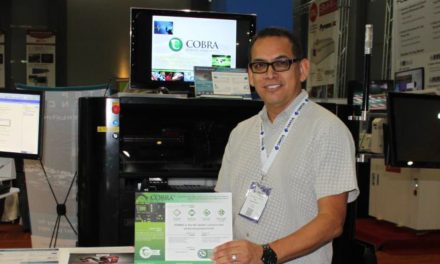Musts, Needs and Wants In a Low Margin Business

By Michael Ford, Aegis Software

Michael Ford
There is more psychology involved in decision-making related to production hardware and software purchases than most people realize. Low-margin businesses tend to withhold investment in order to support short-term profitability, but with oft forgotten longer-term consequences. If opportunities and challenges as we come out of “COVID 2020” are significant enough, what should be the smart approach to making key investments, if any?
People in manufacturing are often unsung heroes. In every organization, there are those few, who work tirelessly to keep the operation running smoothly, delivering incremental capability and growth. Without these few people motivating others by example, our worlds would be far grimmer. Though we really depend on them, unfortunately, we also tend to take these people for granted, seeing no need for any significant change or investment. The outcome is predictable, like climbing a hill in the countryside, with every step comes incremental improvement as progress is made towards the peak. Standing atop the hill, the proud climber surveys the horizon, only to realize that surrounding hills are higher, complete with industry peers standing on their summits, also looking around.
So the chosen hill to climb had its limitations. How then to get the climber from this hill to one with more potential? It appears the only way is down, but no-one wants to go back down, as it implies that there is loss of value in investments made, and even worse, responsibility for poor decision-making. Can we not start building a platform on this hill until it is our desired height? It is a familiar situation as illustrated in popular television programs, where experts go into a stagnant or failing restaurant or hotel. There is always an initial tear-down of old practices, exposing issues that have become overlooked, that are holding the business back.
Off-screen in the professional manufacturing world, though certain consultants may disagree, such techniques are rarely appropriate. The reality needs to be faced however that solutions and decisions that once appeared to be the best, should now give way to new thinking in a changed environment. No-one is to blame. We all do our best based on knowledge available at the time. The operation now needs to work as a team to find a way to fly from our hill over to the higher peaks, through wise investment. Ideas are put forward perhaps for a new machine, a new line, new MES software environment, new ERP, as well as associated new “best practices” around these solutions.
This is a nightmare scenario however for low-margin operations. Though the intent is admirable, a random spend of money is not necessarily a good thing. The return on any investment within the financial period is generally the only possibility that the business could bear. Time then to sort out the musts, needs and wants, to determine exactly what investment strategy is going to meet current and future business needs, without destroying the business itself in the mean-time.
Though the manufacturing world has changed, both in terms of digitalization as well as the change in customer demand patterns towards high-mix and volatility, the actual world within manufacturing has not changed at all. The nature of the processes, causes of loss and waste, as well as poor quality, all remain the same. Core challenges and opportunities can therefore be discovered through simple open-mindedness and communication within the internal team, so as to create the list of needs, musts and wants in terms of finding business-centric solution needs.
The inherent weakness for an EMS company is the determination of separation between different customer’s work. Having two customers means having two separate lines, right? One customer product per line is akin however to high-volume mass-production, where the tuning of the dedicated line matches each customer need over a long period. In these times of high-mix and volatility, this leads to very poor productivity. Many factories, where acknowledgement is included of normally hidden factors, report productivity levels of just 10% – 40%. In a low-margin operation, wouldn’t a doubling of productivity be significantly good?
Flexibility is the key to keeping existing equipment utilized, but requires a far greater degree of control, as customer work and key materials often do need to be kept isolated, meaning that changeovers need to be planned and managed carefully, utilizing technology from machine vendors in terms of physical material setup and exchange, as well as IIoT-driven software technologies in the form of MES. In most cases, this focusses investment requirement more into the operational and management domain that includes software, rather than simply adding new machines and lines, though the choice of machines with greater flexibility than those that perhaps exist, remains important. In this latter case, people have long been performing the tasks that the latest MES solutions have now automated. The choice is not however to simply replace such people with software, but to realize that their task is escalating together with the increase in product mix and customer volatility. Software becomes the essential tool in enabling the people to do their work to the degree of excellence required. To now fly from your current perspective to a new paradigm, consider the following, my three laws of manufacturing digitalization:
Musts:
The only “must” is that your business goals are achieved, such that the return on investment model works for the business, within the financial period being the best possible case. In low-margin operations, all risks need to be considered. This includes initial purchase cost of software, but more importantly, the cost of ongoing ownership. Some solutions out there on the market represent an insanely complex conglomeration of ex-point solutions, most of which are there simply to adapt legacy software to the new digital world. Getting a designed for purpose, modern MES solution represents an order of magnitude fewer issues and cost around ongoing training and the ability to utilize the software. These need to be investigated appropriately and highlighted.
Needs:
The real need is that any investment today represents tools that can be a part of any hill or mountain that you decide to ascend in the future. Though it may be that the focus on the “must” areas takes priority, requiring tools and features to be introduced gradually, giving time for new digital best practices to become established, it is imperative that any chosen solution will provide within its singular platform, the ability to include further “must” conditions that evolve as time goes on. To fly from one peak to another without the need to trek down and up again, this is essential.
Wants:
Perhaps surprisingly, I am going to say that “wants” should be avoided. They are the pandemic of the software industry. Quite often, “wants” represent support for historically driven process work-arounds which, with the full understanding of the new solution, are most often no longer a need. For sure, operations are different and manufacturing technology continues to evolve, but, these innovations either belong in the “need” category, or, should not be there at all. Supporting “wants” with customization destroys the ability to recoup the “must” condition of return on investment, as both the initial cost is very high, as well as follow-on costs of support and update. Buying into software that is bespoke, which includes significant in-house development, cannot work for a low-margin manufacturing business. Even governments that liberally allocate vast sums of money for bespoke systems soon realize that they have fallen into a money pit. Low-margin manufacturing simply cannot afford such luxurious mistakes. Where there are genuine conditions coming along that need to be satisfied, your chosen, trusted partner will have seen the “need”, and respond accordingly, with added off-the-shelf enhancements.
Armed with these three laws of manufacturing digitalization, take a look at your post-COVID opportunities, how much better your existing investments can work for you in the right kind of digitalized manufacturing environment, and act now to select the singular IIoT-driven MES platform that you need in order to succeed with the new age of product mix and customer volatility.












